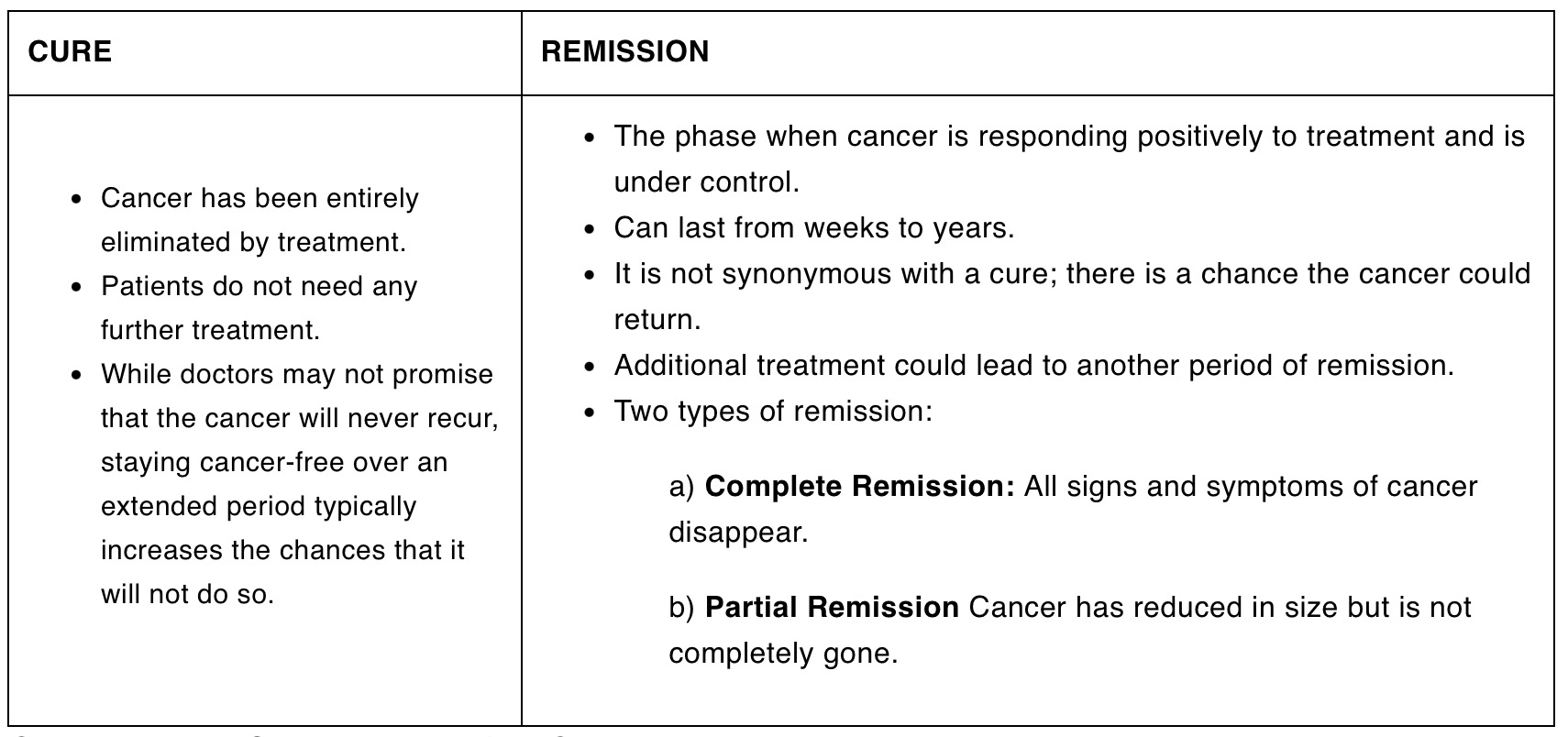Understanding Cancer Survival Rates: A Hope for Recovery

No two cancers are the same, with different forms of the disease often having varying outcomes. However, there are some that have a higher survival rate than others.
The term “cancer” often invokes a sense of dread, yet it's crucial to understand that it encompasses a broad array of diseases, each with its distinct features and prognoses. The American Cancer Society describes cancer as “a group of diseases characterised by uncontrolled growth and spread of abnormal cells”. This group is a large one: Over 100 different diseases fall under the umbrella term of cancer. While certain cancer types pose significant treatment challenges, others have higher success rates with current medical interventions.
To determine how treatable a cancer is, healthcare professionals often refer to the five-year relative survival rate. This benchmark measures the percentage of people who survive five years after they were diagnosed with cancer. For example, if the five-year relative survival rate for a specific type of cancer is 90%, it means that people who have that cancer are, on average, about 90% as likely as others who do not have that cancer to live for at least five years post-diagnosis.
Which cancers then are deemed most treatable? Drawing on data from authoritative bodies, including the American Cancer Society, Cancer Research UK and the Canadian Cancer Society, our list highlights the types of cancer with the most favourable outcomes. Being vigilant about symptoms and seeking early intervention are crucial steps in enhancing treatment and recovery.
BASAL CELL CARCINOMA
Five-year survival rate: 100%
Basal Cell Carcinoma (BCC) ranks as the most prevalent form of skin cancer in Singapore, typically developing in the skin's basal cells (small, round cells found in the base of the epidermis, the outer layer of the skin). BCC is known for its slow growth and generally painless nature. Despite how treatable it is, BCC should not be taken lightly, as incidence rates have been rising in Singapore for the past 50 years.
Symptoms to look out:
- A painless lump (nodule) or ulcer with a shiny or translucent raised edge, often with pigmentation and frequently found on the face
THYROID CANCER
Five-year survival rate: 99.5% (for localised cases)
While thyroid cancer is the eighth most common type of cancer among women in Singapore, it is also among the most treatable, particularly when caught early. This fact is reassuring, given recent studies that project thyroid cancer to be the fastest-rising cancer in women.
Most cases of thyroid cancer are managed by surgically removing the thyroid gland. If lymph nodes are enlarged or show signs of cancer spread, they will be removed as well. Patients with very small thyroid cancers may choose to have their condition monitored closely, deferring surgery until it is deemed necessary.
Symptoms to look out:
- Swollen lymph nodes in your neck
- Pain in your neck and throat
- Difficulty swallowing
BREAST CANCER
Five-year survival rate: 86-99%
Breast cancer outcomes underscore a vital truth: early detection can save lives. Localised breast cancer, contained within the breast, has an exceptional five-year survival rate of 99%. This rate decreases to 86% when the cancer has spread to adjacent lymph nodes.
The mammogram remains the most reliable screening tool for breast cancer. It can detect the presence of cancerous growths even before they can be felt with the hand. Women over 40 are advised to schedule annual mammograms to enhance early discovery and treatment opportunities.
Breast cancer also has a risk of recurrence. This risk is influenced by several factors, including the stage and grade of the cancer, its molecular subtype and genomic score. Patients with a higher risk of recurrence will be recommended for additional treatment beyond surgery to improve the chance of cure.
Symptoms to look out:
- Painless lump in the breast
- Persistent itch and rash around the nipple
- Bleeding or unusual discharge from the nipple
- Skin over the breast is swollen and thickened
- Skin over the breast is dimpled or puckered
- Nipple is pulled in or retracted
PROSTATE CANCER
Five-year survival rate: 97-99% (for localised and regional cases)
Prostate cancer is the second most common cancer among Singaporean men, particularly those above the age of 50. Originating in the prostate gland cells, this cancer often remains asymptomatic due to its slow growth. Early-stage prostate cancers are highly curable with surgery and/or radiotherapy. Low risk early-stage prostate cancers may also be observed. However, prostate cancer that has spread to distant sites such as bones and distant lymph nodes are not curable, even though there are many treatment options that allow patients to remain well for prolonged period.
Healthy men older than 55 years old should discuss screening blood test for Prostate Specific Antigen (PSA) with their doctors to screen for prostate cancer.
Symptoms to look out for:
- Weight loss
- Pelvic, back or hip pain
- Urinary difficulties, such as burning or pain during urination, inability to urinate or blood in the urine
TESTICULAR CANCER
Five-year survival rate: 95-100%
The survival rate for testicular cancer is very high, with Cancer Research UK predicting that nearly all men survive the disease. Despite accounting for only 1% to 2% of male cancers, it is notably prevalent among younger men, occurring predominantly in males aged 20 years to 40 years.
Standard treatment typically involves removing the affected testicle. Chemotherapy is very effective in reducing the risk of recurrence after surgery in high-risk patients. Even in patients with advanced testicular cancer, a large proportion may be cured with intensive chemotherapy. Fertility preservation should be discussed with your healthcare provider if you have concerns about your reproductive future.
Symptoms to look out for:
- A lump or swelling in either testicle
- A feeling of heaviness in the scrotum
- Pain or discomfort in a testicle or the scrotum
- Back pain
BEACON OF HOPE
9 in 10 people people with certain early-stage cancers, such as breast, prostate and thyroid cancers, survive for at least five years after their cancer is diagnosed.
Modern treatments are continually extending the life expectancy of patients with advanced-stage cancers, offering more hope than ever before.
Source: Singapore Cancer Society
UNDERSTANDING THE DIFFERENCE: CURE VS REMISSION

Source: National Cancer Institute, the US
Understanding Cancer Survival Rates: A Hope for Recovery originally appeared on Parkway Cancer Centre
and has been republished with permission
Further Reading
The article above is meant to provide general information and does not replace a doctor's consultation.
Please see your doctor for professional advice.
